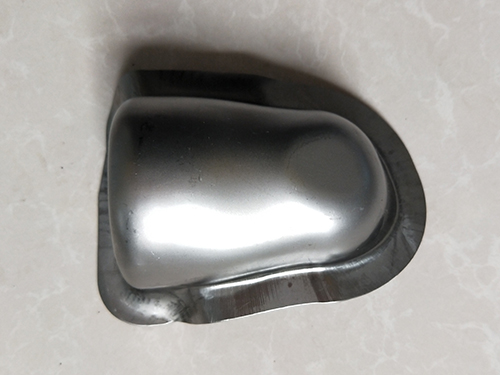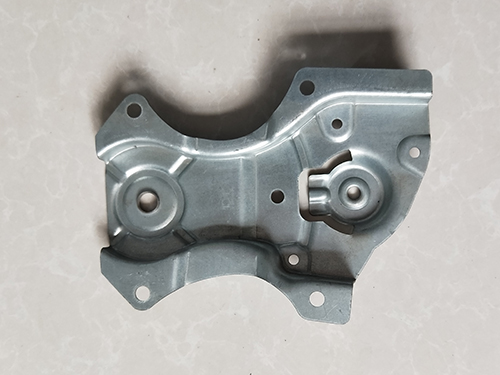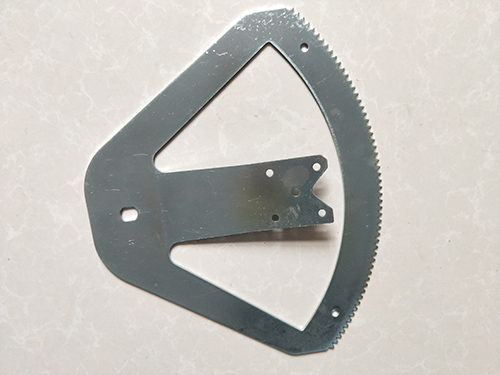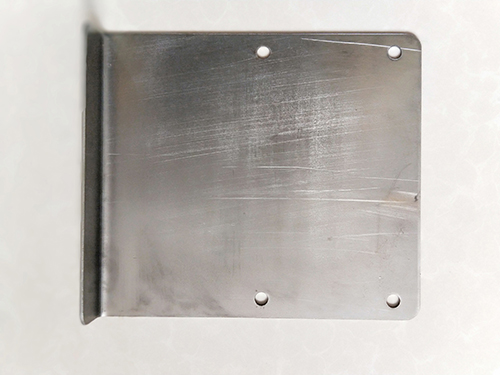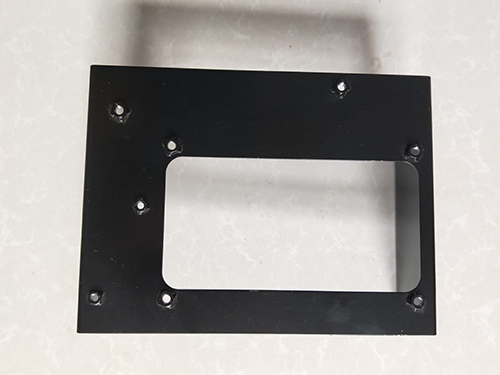Analysis of the Development of Automotive Stamping Parts Technology
With the continuous call for lightweighting, energy reduction, and high performance of automobiles, higher and higher requirements have been put forward for automotive stamping technology. Laser welding plates, steel plates, baking hardened plates, aluminum alloy materials, etc. have been successively applied in the production of automobiles.
The challenges currently faced by the automotive stamping parts industry are as follows:
1) Mold design and manufacturing technology, the world's automotive mold manufacturing technology is gradually replacing on-site operations with computer-based operations, replacing manual labor with processing, highly standardizing mold design and manufacturing, and developing single piece production methods towards assembly line production. The large-scale external covering mold enterprises have significant differences from domestic enterprises in many aspects of mold production, which is worth our good reference.
2) The development and application of simulation technology is a means for the development of stamping.
3) Automation and flexibility requirements are factors considered in the development of stamping.
4) The application of new processes includes the use of steel plates, stamping technology for laser welded blanks of various thicknesses, sheet metal hot forming technology, internal high-pressure tube expansion technology, light alloy forming technology, digital forming technology, special stamping forming technology, etc.
Among the above-mentioned problems, the more prominent one is the design and manufacturing technology of automotive stamping parts molds, with the development of automotive industry molds taking the lead. In 2009, the amount of molds in China rose to 18 billion US dollars, with automobile molds accounting for about one-third of the total. For a sedan, including the exterior body, engine, interior, etc., more than 90% of the components need to be formed by molds. To manufacture a sedan, about 1000 sets of stamping molds and more than 200 sets of interior molds are required. In 2009, more than 50 new cars were launched, requiring 60000 sets of automotive molds.
There are several types of automobile companies in our country: one has its own mold factory, one has its own stamping line, and there is also one that does not have a mold factory or stamping line. When Honda sued Hebei Shuanghuan for infringing on its CR body design, they stated that they believed there were nine other companies whose products constituted infringement. The reason why many cars resemble Honda (RY) in appearance is because the body of the car comes from a single body manufacturer. At present, some large automobile factories in China have four major processes: stamping, welding, painting, and final assembly. Their stamping lines are either purchased from joint ventures or from Japan and Germany because China's ability to produce body molds is still insufficient. The remaining one belongs to those who have developed their own molds, and the mold factory has the ability to produce new models of molds, but their technology and experience are limited.
Development trend of automotive stamping die technology
Over the years, automotive stamping parts have been produced; With the development of molds, we can see that mold companies are increasingly relying on mold production, which can reduce manual labor to a very low level. The demand for mold production in automobiles is more important than short cycles. In large-scale automobile production, the cost of molds themselves is far less than the cost of using molds. From this point of view, the current domestic mold production does not have any advantages, and this industrial transfer will not become a trend. In the past ten years, the technological progress introduced by our Tongwen has not filled the new gap brought about by others' efforts to pursue technological progress. From another perspective, if the automotive mold industry really shifts to the third world, it will be a sunset industry. Currently, there is still room for development and demand for automotive molds in the absence of breakthrough changes in body materials.
1. Developing computer technology
The development of mold manufacturing technology emphasizes the application of computers, and more and more people are moving from the production site to the front of computers. Physical design combined with numerical control programming has replaced manual prototyping and machine tool operation. Mold surface design and numerical control programming reduce the need for pliers repair, and machining eliminates the need for mold grinding and repair. Nowadays, the number of CNC programming personnel in mold enterprises has generally exceeded that of on-site operators. The labor cost of CNC programming exceeds 50% of the processing labor cost of machine tools, and the programming cycle exceeds the machining cycle. The development of computer technology applications has not yet reduced the cost of molds, but mold production has shifted from relying on human skills to automated and semi automated CNC production. This unmanned processing has improved the quality of molds and product parts, shortened production cycles, and computer technology has brought mold manufacturing technology to a new height. By comparison, it can be seen that the current computer applications in China are still relatively primitive. It is not that our machine tools and software are not good, but there is a big gap in the basic technology of application. Even if we transfer all the technology to achieve that effect, it is not an easy task.
2. Eliminate the fitter
It was originally believed that molds, which are single piece products with complex profiles, cannot be produced without manual labor, but mold companies proposed to eliminate fitters. Eliminating fitters is a goal, mainly referring to reducing or avoiding the need for grinding and adjusting fitters. As mentioned earlier, this goal has been basically achieved. In addition to grinding the drawing surface and drawing convex corners, grinding, mold repair, and adjusting pliers repair are mostly abnormal or compensate for design and manufacturing defects, and are no longer a single and normal task.
3. Integrated processing
Taking Toyota in Japan as an example, there are three types of CNC machining lines on site in its machining workshop. The first type is a machining line composed of several CNC machine tools with interchangeable bed frames. One line includes various machine tools such as bottom machining, horizontal milling, rough milling, and precision milling. The matching division of labor is clear, and there is no need to reinstall and align workpieces when changing machine tools. This assembly line is approximately a product from the 1980s. This is an unmanned flexible processing machine group with a three-dimensional warehouse, which is a product of the early 1990s. The third type is the rough and fine machining integrated, high-speed, and five sided machining center that has only been put into use in recent years. The first type of machining line has a single machine, which is currently the CNC machine tool used. However, the machine tool is a multi worktable, and its efficiency in aligning without reinstalling the card is very high. We are still basically at the level of single machine operation, which is worth learning from. For flexible machining machines, although it is difficult to operate, the preparation work and time are long. Without a large number of precision machining tasks, it is not practical to use, which is the case in many mold companies. It seems that this is not a successful direction. Integrated machining center is currently being developed, which has the advantage of integrating the advantages of various machine tools. In addition to bottom machining, it can perform rough, fine, horizontal, high-power, and high-speed machining in one go, with high processing efficiency. The disadvantage is that the cost of machine tools is high and the environmental requirements are also high, but undoubtedly this is an idealistic technology that represents the development of CNC machining technology and should be taken seriously.
The financial crisis has prompted emerging market buyers to show a growing trend in purchasing from China. China's automotive stamping parts industry is developing, and the importance of emerging markets, including India, Brazil, Russia, etc., is increasingly prominent.
